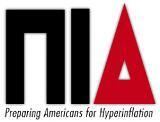 In today’s banking industry, looking carefully before you leap is an important part of any decision-making process, especially where your money is involved. You might assume that any deposit that you make in a United States banking institution is FDIC insured. Nothing could be further from the truth! Assuming that the FDIC is automatically going to cover your loss when investing in banking instruments could prove to be a mistake. In any event, brokering a deposit in a failed bank is likely to result in a loss of access to your money.
In today’s banking industry, looking carefully before you leap is an important part of any decision-making process, especially where your money is involved. You might assume that any deposit that you make in a United States banking institution is FDIC insured. Nothing could be further from the truth! Assuming that the FDIC is automatically going to cover your loss when investing in banking instruments could prove to be a mistake. In any event, brokering a deposit in a failed bank is likely to result in a loss of access to your money.
Putting money into an FDIC-insured certificate of deposit called a brokered CD could seem like a no-brainer in the cash department. Some consumer investors have discovered hurdles with so-called brokered CDs issued through one distressed Arkansas bank. The third bank closed by the FDIC this year on May was ANB Financial in Bentonville, Arkansas.
ANB has been the largest U.S. bank closed so far this year. Pulaski Bank and Trust Co. in Little Rock assumed control of the bank’s locations and deposits were quickly insured. ANB Financial had a large amount of brokered deposits in the neighborhood of $1.6 billion. These brokered deposits were not part of the FDIC deal. Why?
Brokered CDs are not the same as an ordinary CD (certificate of deposit) opened directly through a local or out-of-state bank. Brokerage firms offer CDs, too. The deposit brokers often negotiate a higher rate of interest for a CD by promising to bring a certain amount of deposits to the institution. These brokered CDs are then offered to customers. If you put money into a brokered CD, read all the disclosures so that you know which U.S. bank or thrift insures your CD.
If a bank fails, the healthy bank that assumes control of the troubled bank’s assets won’t usually agree to acquire the brokered CDs. It’s essential to understand if all your money invested in brokered CDs falls within the FDIC insurance limits.
180 brokers had funds on deposit at ANB. Paperwork is required to make sure that customers are only covered according to FDIC limits. Three weeks later, only 35% of the brokered deposits have been returned to the customer. The burden falls on the customers to provide proof of coverage for brokered deposits up to $100,000. You are the one that stands to lose if you have not read the fine print.













Regardless of whether a CD is done through a broker or direct with the bank it is insured up to the limits set by the FDIC. For most people that is $100,000.00 at each institution.
Banks operating with different names on the internet cause more confusion than brokers do. And for the record, although we are deposit brokers, 95% of what we do are direct deposits. The investors send their funds direct to the banks.
If a bank fails, people that have direct deposits usually receive their funds in 7 to 10 Days. People with a CD through a broker generally receive the funds in about 30-Days. We had clients with brokered CDs at ANB. The bank was closed on 5/9 and most of the clients have already received their funds.
It would have been sooner except some funds were erroneously sent to Pulaski, because ANB had them in their system incorrectly.
Comment by CD Rates — June 6, 2008 @ 10:10 pm
what happens if someone has millions of dollars how do they protect their funds in our banking system? Can you have more than one account at a fdic bank? thanks cynthia
Anyone that has millions of dollars would likely either invest it in mutual funds, Wall Street, real estate or other opportunities to make money outside of a low ball CD rate. People of means usually do things with their money to make more.
The basic insurance amount is $100,000 per depositor, per insured bank. The $100,000 amount applies to all depositors of an insured bank except for owners of certain retirement accounts, which are insured up to $250,000 per owner, per insured bank. Deposits in separate branches of an insured bank are not separately insured. Deposits in one insured bank are insured separately from deposits in another insured bank.
Deposits maintained in different categories of legal ownership at the same bank can be separately insured. Therefore, it is possible to have deposits of more than $100,000 at one insured bank and still be fully insured.
There are those folks that believe that government backing isn’t riskless either and they would be right. What we are discussing is maximum safety working within the system. Nothing in life can be fully guaranteed, just like nothing physical lasts forever. ~E. Manning
Comment by cynthia darling — August 5, 2008 @ 12:19 pm